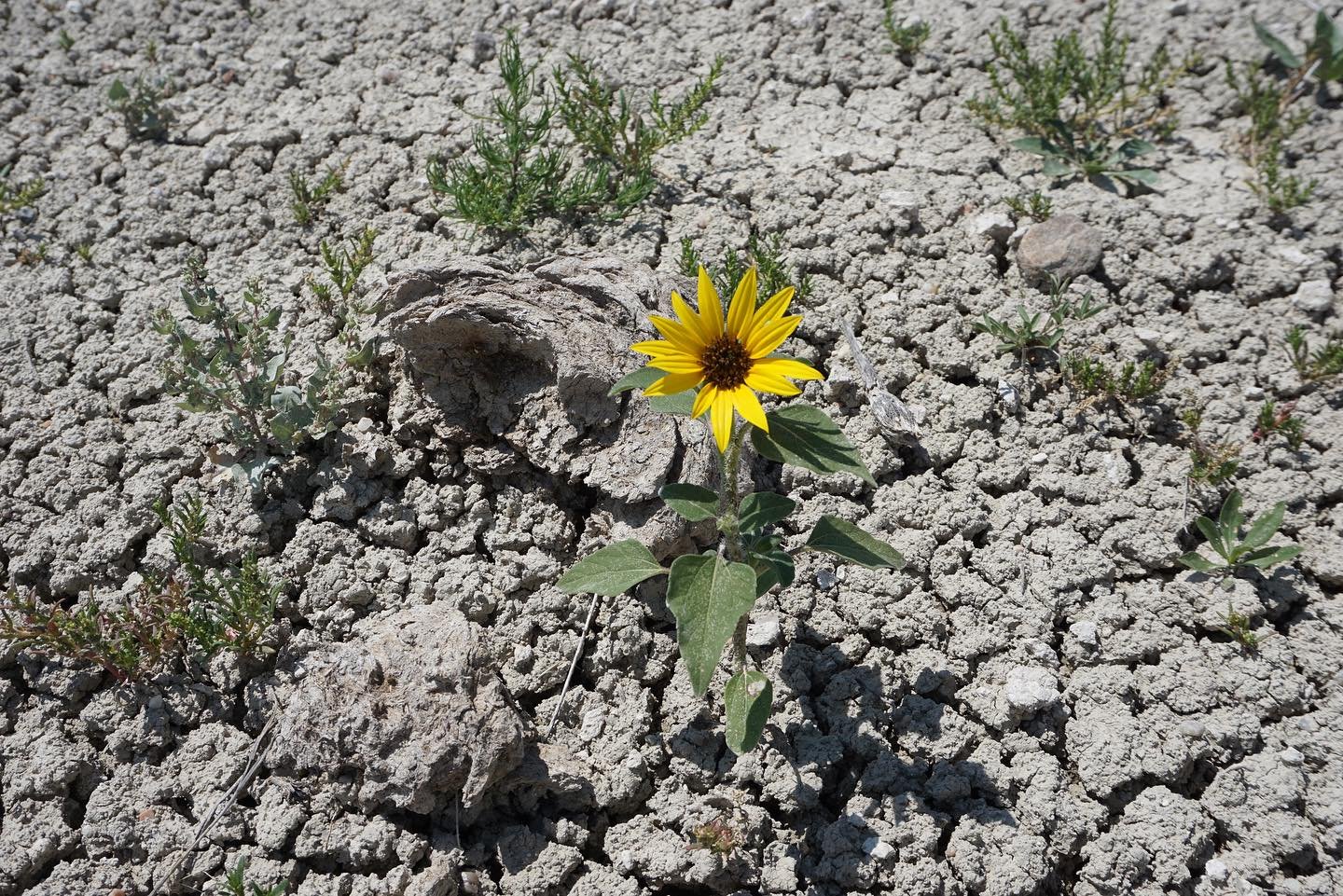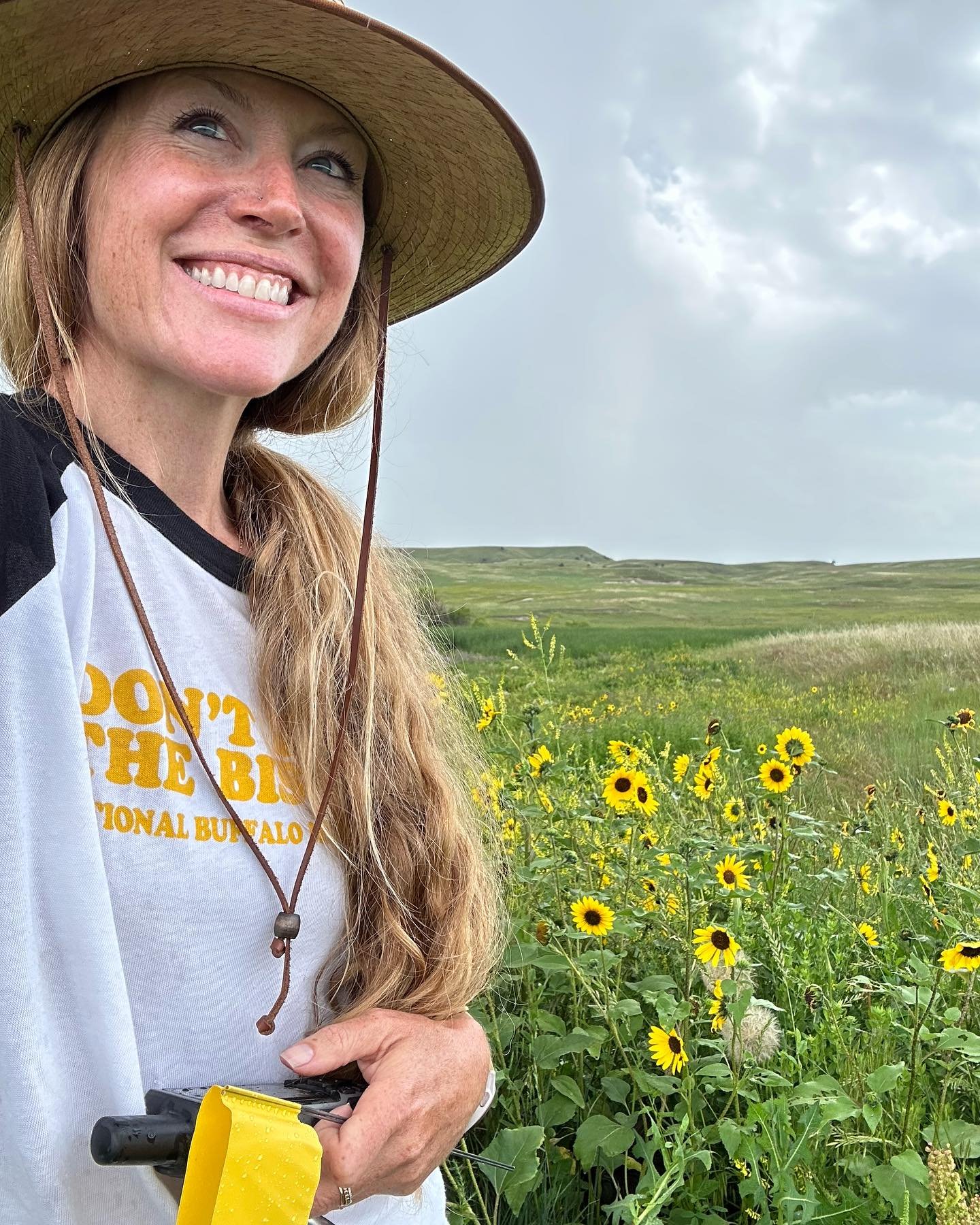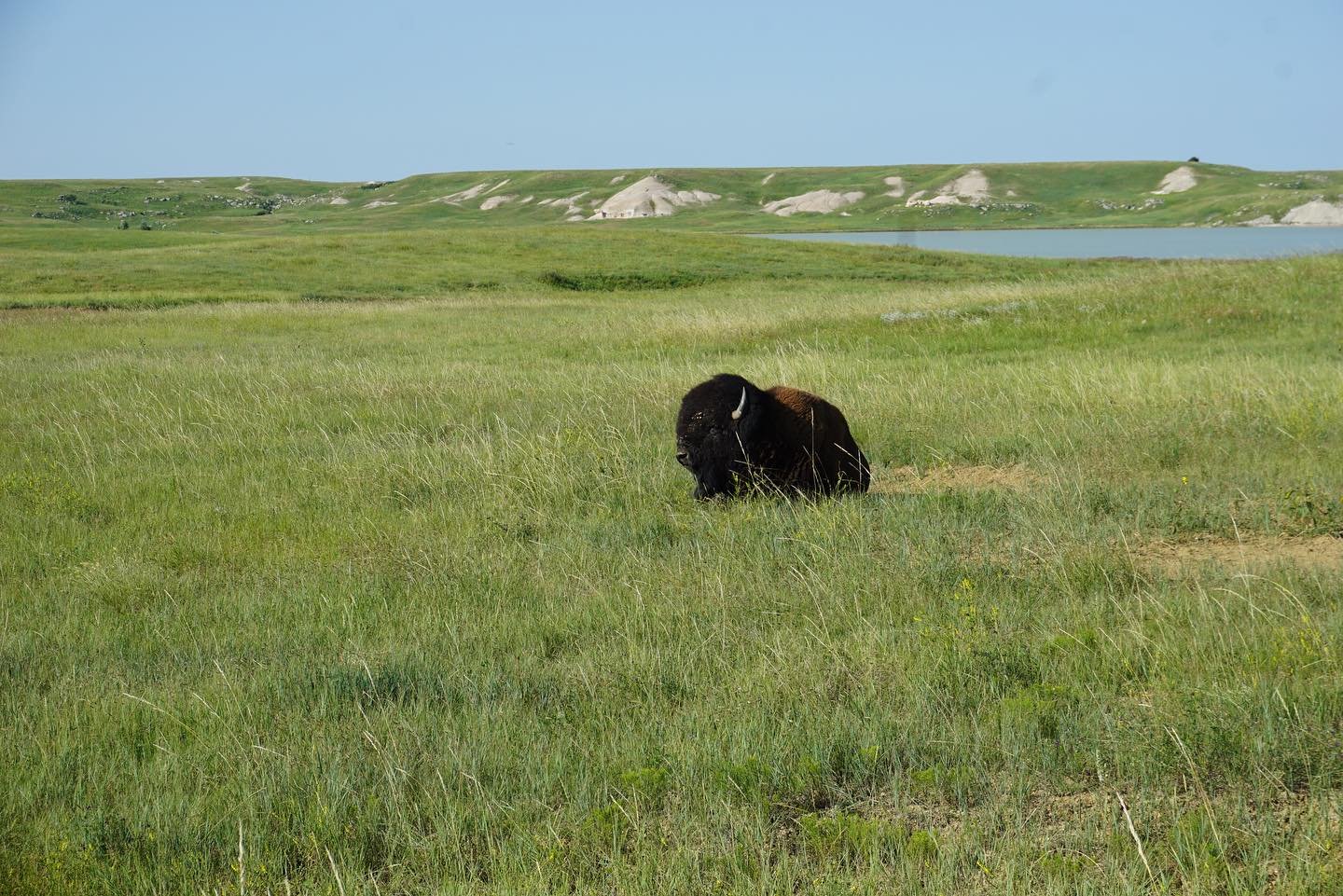Bison & Bee Habitat Project
Bison grazing grass and avoiding blooming Maximilian sunflowers, a late summer native flower vital to bees
The modern agricultural practice of monoculture creates habitat loss, drives climate change, and requires overuse of pesticides. This unsustainable practice is connected to staggering losses of honey bee colonies and native bee populations. Creation and conservation of refugia for bees on ranchlands is one solution for their survival. Holistically managed bison herds are currently being utilized to mimic the historical ecological impact these animals had on the pre-colonial Great Plains. We theorize the trophic rewilding of the landscape on bison ranches in South Dakota and eastern Montana has restored nutrient dense habitat and created ample nesting sites for bees. To understand the potentially synergistic or mutualistic interactions between honey bees, native bees, and bison we are monitoring vegetation, soil, grazing behaviors, and pollinator communities on western plains and prairies. These efforts will examine bee nesting frequency, bee habitat, bee communities, soil health, and flower pollen availability and nutritional content. Our goal is to utilize the findings from our research projects to positively influence future conservation, policy, and land management decisions for both bees and bison through education, relationship building, art, and advocacy.
Project objectives and intended outcomes:
To understand the potentially synergistic or mutualistic interactions between honey bees, native bees, and bison by installing multi-year vegetation and pollinator monitoring areas at multiple bison properties for multiple years. These efforts will examine:
Bee nesting frequency – examine the presence/absence of soil nesting bee sites in areas grazed by bison,
Bee habitat – identify the full complement of flowering forb species in the study area, and determine which forbs support pollinators while avoiding consumption by bison,
Bee communities – comprehensive sampling of native bee species (including soil, stem/twig, wood, hive, and cavity nesting bees) using both passive and active trapping methods,
Pollen availability and nutritional content – identify which flowering plant species at these bison properties are both attractive to bees and nutritionally dense, by quantifying protein and lipid content of available pollen. Additionally, we will compare how the pollen nutrient density at these properties compares to other agricultural landscapes across the western US. This is a collaborative project with the USDA-ARS (Corby-Harris Lab, Carl Hayden Bee Research Center)
Other project goals will include:
Collaborating on methods to increase flower density at the bison properties.
Understanding landscape management practices at the bison properties, and how they may influence bee communities.
Monitoring soil health at the bison properties, and how this may influence bee and flower communities and flower pollen nutrient density.
Educating the general public on the cultural, nutritional, ecological, and tribal importance of bison through art exhibits, presentations, social media, traditional media, and beeregenerative.org.
Developing curriculum to educate K-12 students on the importance of bees and bison on the prairie and plains, and how the two animals coexist.
Educating the agricultural community (specifically ranchers, beekeepers, and native bee conservationists) on the benefits of bison coexistence at conference presentations, industry publications, on-ranch collaborative workshops, social media, traditional media, and beeregenerative.org.
Utilizing data from the project to support policy that would create additional land, financial support, and training for tribal and private land owners who wish to steward bison.
















